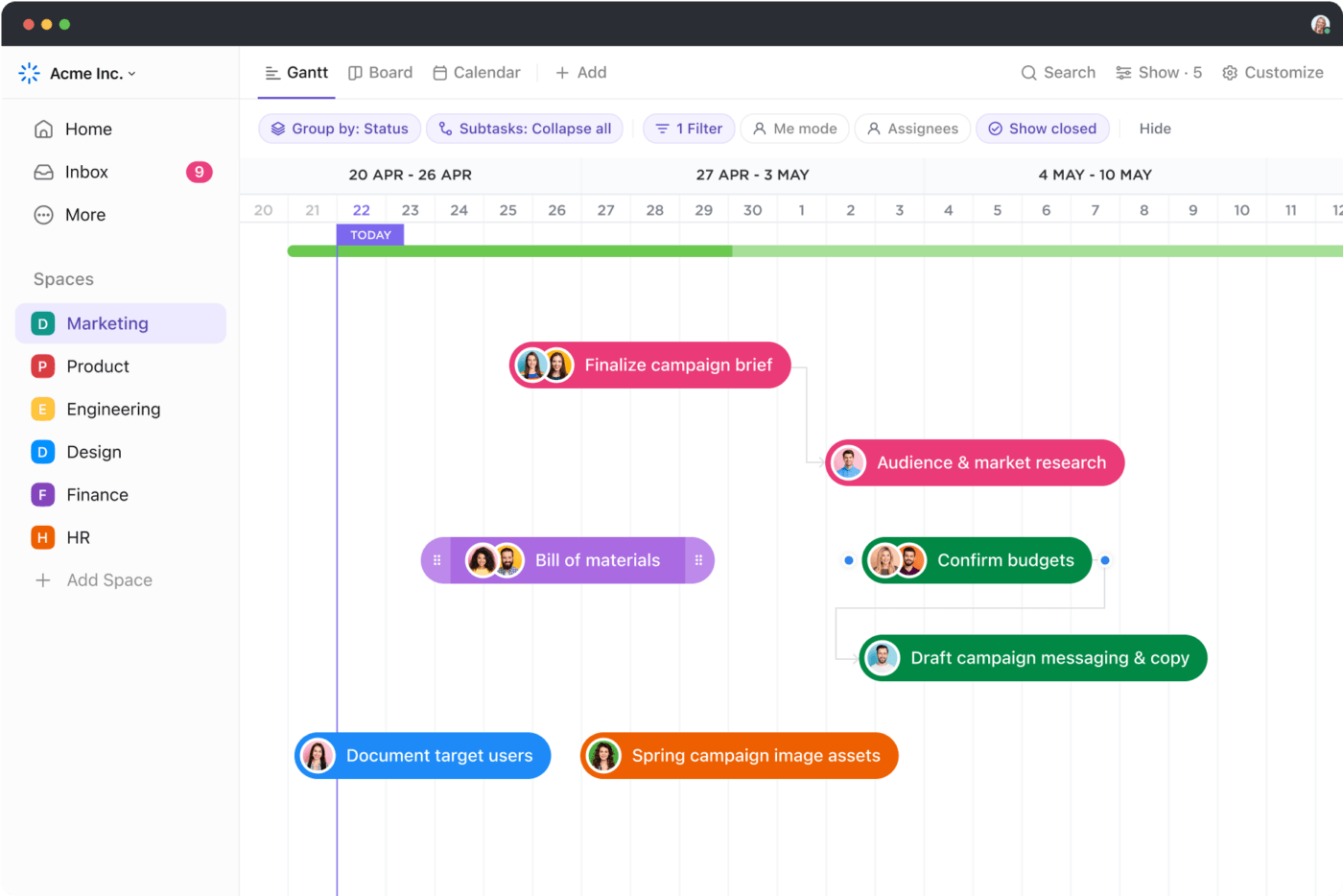How to Make a Chart in Google Docs

Sorry, there were no results found for “”
Sorry, there were no results found for “”
Sorry, there were no results found for “”
In an era where data floods every corner of our lives, Google Docs offers a simple solution for visualizing and clarifying your information with charts.
Charts transform mundane numbers into compelling visuals easily interpreted at a glance. Whether you’re crafting a sales report, preparing a presentation, or updating stakeholders, charts bring clarity and structure to your data.
Given the importance of charts in communicating key insights, it is essential to know how to create and utilize them effectively.
Read on as we explore how to create and customize charts in Google Docs to enhance your data presentation.
Google Docs, a key component of Google Workspace, is a versatile word processor that simplifies document creation and presentation. Features like bullet points, tables, and charts help you present information clearly.
Here’s how to add a chart to your Google Docs document:

Start by opening Google Docs. Whether starting a new document or working with an existing one, navigate to the upper-left corner of the screen and click on the ‘Insert’ option. This will reveal a drop-down menu with various options.
Read more: How to make a checklist in Google Docs

From the drop-down menu, select the ‘Chart’ option. A sidebar will open, presenting various chart types, such as bar, column, line, and pie. Choose the type of chart that best suits your needs. For instance, if you select the line chart, a default line graph will be inserted into your document.
After inserting the default chart, a pop-up will appear in the bottom-left corner with the option ‘Edit in Sheets.’ Click on this to open the chart in Google Sheets for further customization.

Since the pop-up only appears briefly, you might miss it. Alternatively, click on the chart, then select the three vertical dots in the upper-right corner. From the drop-down menu, choose ‘Open source,’ and a Google Sheets tab will open for you to edit the chart.
Also read: How to make a flowchart in Google Docs
In the Google Sheets tab, click on the chart and select the three vertical dots in the upper-right corner. A drop-down menu will appear with options such as Edit chart, Delete chart, Download chart, Publish chart, and Copy chart. Choose ‘Edit chart’ to make changes.

A Chart Editor sidebar will appear next to the graph. This sidebar has two tabs: ‘Setup’ and ‘Customize.’ Click on the ‘Setup’ tab to choose your chart type, define the data range and X-axis range, and add the data series you want to display.
Read more: How to make a line chart in Google Sheets
Click on the ‘Customize’ tab to access various options for tailoring your chart or graph.
You can adjust the following chart elements:

After customizing your chart, return to your Google Docs document and double-click on the chart. An ‘Update’ option will appear in the top-right corner of the chart. Click this to apply all the changes made in the Google Sheet to the chart.
Next, adjust the chart’s size and position within the document. Click on the chart and select the ‘Image Options’ tab from the menu above it. A pop-up menu will appear with options for resizing, rotating, text wrapping, recoloring, adjusting, and adding alt text. Use these settings to format the chart to fit your needs and preferences.

To streamline chart creation in Google Docs, use a Google Sheet to create and insert them directly. First, design your charts in the spreadsheet, then copy and paste them into your Google Docs document for a more efficient process.
Bonus tip: Explore Google Docs hacks to streamline document collaboration and boost productivity. You can use hidden features and shortcuts to enhance teamwork and efficiency.
While Google Docs is a valuable tool, it has some limitations when it comes to chart creation. These constraints can impact the overall effectiveness and flexibility of your charts.
Here are some fundamental limitations to consider:
In this regard, ClickUp offers a powerful solution to overcome the limitations of Google Docs. It can help streamline chart creation and enhance your data visualization experience. This provides a more efficient and flexible approach to managing your charts and data.
Bonus: How to Make a Family Tree on Google Docs!
As an all-in-one productivity tool, ClickUp is a powerful alternative to Google Docs. It not only syncs seamlessly with Google Workspace tools like Docs and Sheets but also integrates smoothly with various third-party tools such as Microsoft Excel and Zoho.
With its robust features, ClickUp allows you to create, edit, and format simple and complex charts effortlessly across multiple devices, including mobile phones, laptops, and desktops.
Here are some ways you can create and customize charts in ClickUp.
To create a line chart in ClickUp’s Dashboard, follow these steps:
Similarly, you can create various custom and sprint chart cards in ClickUp’s Dashboard, including:
ClickUp goes beyond the basic customization options found in Docs and Sheets by providing advanced features, including:
In addition to these customization options, ClickUp offers interactive features like drill-down capabilities.

Here’s how you can use the Chart drill-down view:
Gantt charts are essential for managing priorities, tracking dependencies, identifying bottlenecks, and monitoring project progress in real time. They excel at visualizing diverse project workflows.
Gantt charts can be handy for managing marketing campaigns, design projects, construction initiatives, or other projects.
While creating Gantt charts in Google Sheets can be time-consuming, ClickUp streamlines this process, allowing you to create detailed Gantt charts with just a few clicks.

To create a Gantt Chart view in ClickUp, follow these steps:
ClickUp Whiteboards is a virtual collaboration tool that you can use to ideate, document processes, draw workflows, and more. You can quickly create a variety of charts in a few simple steps with Whiteboards—for example, an organizational chart.
An organizational chart provides a practical way to record all employees and track team structures in an organization.
To build an org chart with ClickUp’s Whiteboards, follow these steps:
Once you’ve completed it, you can share the chart with others using a link or convert it into a task in ClickUp Tasks.
To save you time, ClickUp has also pre-built a range of Whiteboard templates for some commonly used chart types. Let us tell you about some of them and how you can benefit from them.
ClickUp’s Organizational Chart Template allows you to dynamically visualize your organization’s structure, easily edit and update charts, and enhance communication between teams and departments.
This functionality helps you:
Read more: 11 free org chart templates
ClickUp’s T Chart Template allows you to compare the advantages and disadvantages of ideas, concepts, and action plans. Use this Whiteboard template to visualize and evaluate both sides of a decision and identify the better fit for a given situation.
You can also use this template to:
Additionally, ClickUp’s Alignment Chart Template enables you to map out initiatives, tasks, and respective strategies for their execution. This Whiteboard template helps you assess how individual efforts align with your organization’s goals and identify and address communication gaps.
This helps you:
ClickUp’s PERT Chart Template allows you to plan and visualize processes for various projects. Use this template to create a detailed project timeline and track progress against milestones to complete projects on time.
You can use this Whiteboard template to:
Charts transform complex data into visually appealing insights that are easy to grasp at a glance. While Google Docs allows chart creation via Google Sheets, it comes with limitations that can be challenging and time-consuming to work around.
Consider switching to a more robust solution like ClickUp to address these challenges.
ClickUp offers many features, from Dashboard cards and Whiteboards to Gantt chart project templates and more. This way, it simplifies the creation, editing, and formatting of charts and enhances your ability to manage and visualize data effectively across multiple devices.
Sign up on ClickUp to explore all these features and more today!
© 2025 ClickUp